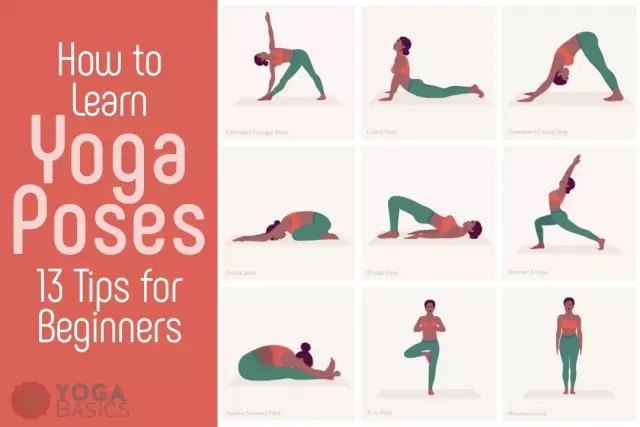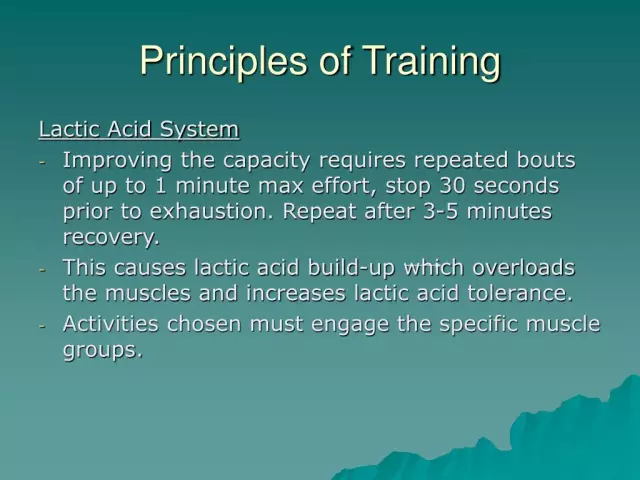- Author Rachel Wainwright [email protected].
- Public 2023-12-15 07:39.
- Last modified 2025-11-02 20:14.
Yoga

Yoga is an ancient teaching, the purpose of which is to achieve a special state by a person, called samadhi, or more simply, nirvana. For an ordinary person, this may seem like something unreal, nevertheless, the state of samadhi is a special state of the human psyche, which can be compared with a trance or lethargic sleep.
In simple terms, yoga is a complex of certain actions and exercises that have developed over several millennia and can lead the human psyche to a certain state (samadhi). Actually, the complex of exercises and actions is called yoga practice.
Today yoga classes are so popular that many people begin to attend them, not really understanding what yoga is. But this is very important to know at least in order to choose the right direction for yourself.
A bit of history
For a long time it was believed that the Yoga Sutra, written by the ancient Indian philosopher and scientist Patanjali and dating back to the 2nd century BC, is the oldest yogic text. However, this opinion has recently been refuted. On the territory of Hindustan, excavations of ancient cities were carried out, the age of which is more than 4 thousand years BC, during which drawings of people in traditional yoga poses - asanas were discovered. Thus, we can reliably say that yoga already existed at that time.
Nevertheless, scientists associate the active development of yogic teaching precisely with the famous "Yoga Sutra", and clear and laconic statements of Patanjali are considered the foundation of yoga.
How does yoga practice go?
Despite the abundance of information about yoga, most people are interested in what, in fact, yoga classes will give them and where to start?
The practice of classical yoga consists of eight stages:
- Yama - self-restraints and rules of conduct.
- Niyama - ethical standards, which consists in maintaining the purity of mind and body. Yama and niyama are called upon to educate in a person morality, certain moral qualities and norms of body hygiene.
- Asanas are actually yoga exercises.
- Pranayama is the practice of correct breathing. Asanas in conjunction with pranayama represent a certain type of gymnastics. Of course, attending yoga classes for beginners, anyone can master the complex of these exercises, but this does not give him the right to be called a yogi. There is more to doing asanas. Only the consistent implementation of all stages will have a deep healing effect on a person, which will intensify with the correct implementation of yoga exercises.
- Pratyahara is the practice of disconnecting consciousness from the senses. It should be noted that it is on the basis of this practice that modern auto-training and meditation are based.
- Dharana is concentration.
- Dhyana is concentration.
- Samadhi is the goal of yoga, the attainment of a special state of enlightenment.
Passing all eight stages is not available to everyone. But you should not consider the last stage of yoga as the ultimate goal. Passing each stage is raising one level above your mental and physical self-awareness.
Yoga types

There are many types of yoga, but here are the most popular directions:
- Iyengar yoga, which allows the body to heal through the precise execution of asanas and pranayamas. This type of yoga helps to lose weight and has absolutely no contraindications. You can do it at any age.
- Ashtanga Vinyasa - The main emphasis is on smoothness of movement. This type of yoga is not very effective for healing, but it perfectly trains endurance and strength. This type of yoga is great for weight loss. Especially useful in childhood. Contraindications: Serious health problems.
- Kundalini - combines meditation, breathing exercises, hatha yoga and chanting. The main goal of this type of yoga is proper breathing, muscle relaxation, concentration of attention. All movements are unhurried, each asana is aimed at normalizing the nervous system and internal organs.
Yoga for beginners: tips
- Anyone wishing to start yoga classes should prefer live communication with an instructor over videos and books. For this purpose, it is better to contact a specialized school, which provides yoga classes for beginners.
- First of all, it is necessary not only to start yoga exercises, but to be imbued with its philosophy. Again, the best decision would be to go to a specialized school.
- After completing the basic course, you can take several individual yoga classes from the instructor. The purpose of these lessons is to get answers to your questions, to correct the daily routine and diet.
- It should be remembered that consistency is the most important thing in yoga exercises. Exercise should be done regularly 2-3 times a week. If you are more interested in yoga for weight loss and you need quick results, you can do it 2-3 times a day for 15-30 minutes.
- If you have a serious illness, in particular a disease of the musculoskeletal system, it is recommended that you first consult with a yoga school instructor or doctor.
- Remember that smoking is not a reason to quit. It is quite possible that after a certain time, performing special yoga exercises, you will be able to completely abandon this bad habit.
What Happens During Yoga Practice?
There are about eight million asanas. Of these, yogis actively use only two or three hundred and only a few dozen asanas are the most useful and necessary for full health for life.
During yoga exercises, irritation of muscle nerves and muscle tension has a positive effect on the central nervous system, improving the functioning of the heart, respiratory system and blood circulation. Pranayama allows you to master all types of breathing: rhythmic, full, slow, controlled. Exercise affects the locomotor system and all the most important systems of the body. Thus, a person becomes more vigorous, more enduring, stronger. With intensive yoga classes, fat deposits are reduced, joints and bones are strengthened, muscles are tightened, the skin becomes elastic, firm and smooth.
The benefits of yoga:
- Through yoga exercises, you will learn to control your body.
- Yoga helps to correct posture, achieve flexibility. Yoga is useful for losing weight.
- Yoga can help reduce the stress hormone in your blood, which prevents calcium from being held in your bones. Therefore, exercise can save a person from osteoporosis or delay its onset.
- Yoga helps to get rid of stress and bad habits.
- With yoga, you can learn to relax and forget about problems.
But remember that all these results can be achieved only with regular training.
Another significant benefit of yoga is that you don't need any additional equipment to do the exercises. Comfortable sportswear is enough.
Found a mistake in the text? Select it and press Ctrl + Enter.






